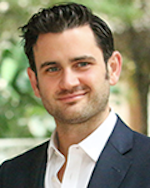Data-driven Dentistry: A series on mobile tech, big data, and oral health
Case study: BlueLight Analytics and the creation of value from data
Data for the sake of data is not very useful. Companies can collect volumes of user information, but if they don’t have something interesting to do with it then the whole endeavor can be a significant waste of resources. This is a brief story about how one company collected data that made sense for their early technology, and then found a new way to provide value for their customers.
In the early 2000s, Professor Richard Price of Dalhousie University developed the MARC patient simulator (MARC PS), a technology that trains dental students on proper light curing techniques. In 2009, Colin Deacon, along with Dr. Price and Chris Felix, founded BlueLight Analytics around this technology and the future of light curing. Dentists in the United States and Europe may be familiar with the checkMARC Service, which leverages a laboratory-grade spectrometer to assess curing light performance. With the purpose of providing education to improve light-curing outcomes globally and promote value-based care in dentistry, BlueLight partnered with 3M OralCare in 2015 to deliver the checkMARC Service to dentists for free. In 2017, the relationship between 3M and BlueLight expanded to offer the Service in more than 25 countries worldwide.
Let's think about what BlueLight Analytics has on their hands. Their technology provides dentists with information about curing light performance, a quality control measure that is likely not in place in most practices. Those offering the checkMARC Service have third-party, scientifically-proven technology to help dentists improve their procedures and troubleshoot issues. And BlueLight Analytics has data, lots of data. To date, the checkMarc Service has amassed more than 100,000 unique curing light tests in dental offices. If you were going to develop a new iteration of this technology, how might you leverage that data? Who is your target customer, and how do you provide value?
In 2019, BlueLight Analytics launched checkUP, a curing light assessment technology meant for dentists. First, they created what I call a "smart radiometer." The technology collects curing light data and leverages BlueLight's database through machine learning and artificial intelligence to calculate the light output. Dentists are then able to get an assessment of their curing light on a continuous, regular basis in their own offices. Second, checkUP stores the instructions for use (IFUs) for light-cured dental materials and then interprets them based on the specific energy output of the dentist’s curing light.
The Bluetooth app-based solution allows users to add their lights and most used dental materials into the app, and precise curing times for each material are then generated after each light test. So, a practice that uses four different curing lights and a dozen different light-cured materials will know exactly how long to cure each material with each light. Dentists may have trouble recalling the IFUs for resin cements, bulk-fill composites, core materials, etc., and they certainly did not know how to adjust those curing times based on the strength of their curing lights. Finally, checkUP organizes all of this information with a clean, app-based interface. Checking curing light health and tracking proper curing times for dental materials is made fast and easy to navigate.
Capturing data for the sake of data does not necessarily lead to successful new product offerings. BlueLight Analytics collected meaningful data and mined it to develop products for new-end users. Their story serves as an insightful case study for companies looking to use data properly and create new customer segments.
Editor's note: This is the first in a periodic series from Dr. Salierno about data-driven dentistry.






